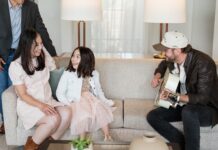
Vidya Sethuraman
India Post News Service
Many older adults and people with disabilities have experienced substantial challenges accessing COVID-19 vaccination. They are at greater risk of getting COVID as they face barriers getting vaccinated, especially if they live alone, lack technology, or speak languages other than English. In California, one-quarter of people 65 years and older are not vaccinated. EMS briefing on June 8 is a call to action to support community-based efforts to reach this population – whether through phone trees, door-to-door knocks, mobile vaccine units, or other outreach. Older Adults in assisted living or long-term care facilities represent one out of three of fatalities due to COVID. As California moves towards reopening, it is important for us to work together to reach this population.
The CDC estimated there were 21 million health care workers and 3 million people in congregate community settings such as nursing homes and assisted living facilities who needed to be vaccinated when shots were first made available. More than 508,000 health care workers are confirmed to have contracted COVID-19, along with more than 1.4 million long-term care residents and staff, according to data from the CDC and the Kaiser Family Foundation.

Language barriers and a largely online scheduling system make it difficult for monolingual non-English speakers and people who aren’t digital natives, often seniors.
“California is coming back, but we are not done. Far from it,” Kim Wade, director of the California Department of Aging, said at a press briefing June 8. “We are still in the midst of this.” She said Latinos age 60 or older, their vaccination rate of 40% is about half that of white and Asian American elders, and lags even the vaccination rate of Latinos in their 50s. Wade announced that the state now has a system in place – with interpreters as needed — to arrange transportation to vaccination providers or in-home vaccinations to people who request them by calling (833) 422-4255 or via the website https://myturn.ca.gov/.
The vaccination rates for groups such as Hispanics and African Americans are relatively low, in sharp contrast with whites and Asians. Therefore, it is necessary to ensure that the elderly are more likely to be vaccinated, to disseminate accurate information, and the community and medical units to help encourage vaccination, said Dr. Louise Aronson, Author, Geriatrician, and Professor of Medicine at UCSF,author of “Elderhood”. Aronson described how, early in the pandemic, when seniors were diagnosed as too ill to return home, they were sent to nursing homes or assisted living facilities. Once there, especially given a lack of protective equipment, they became vectors for COVID, spreading it to fellow facility residents and staff to the point that seniors accounted for 34% of COVID-related deaths.
Anni Chung, Executive Director, Self Help for the Elderly, member of California Commission on Aging said vaccines really work and the older you are the more important it is to get vaccinated. Unless you have a grandchild who’s very tech savvy and can hover over the site for hours for you, seniors that are living alone with no relatives close by, don’t speak English and definitely are not computer literate are really at a loss. She explained on the work of Self Help for the Elderly group, how a caravan of doctors, drivers, and bilingual social workers visited and vaccinated 130 seniors in San Francisco’s Chinatown in early May, after noticing very low vaccination rates there.
Cindy Cox-Roman, CEO of HelpAge USA, a global nonprofit, said that people fall into one of four categories with respect to vaccines: rejecters, wait-and-see, pragmatists, and believers. Over time, however, a large number of wait-and sees become pragmatists.
Jessica Lehman, Executive Director, Senior and Disability Action, which mobilizes seniors and people with disabilities to fight for individual rights and social justice said throughout this pandemic, disabled people and seniors have been at risk of getting sick and dying from COVID-19. She said a 10% fatality rate in nursing homes nationwide and 12% in care facilities in general, but among the disabled, she said, “We don’t even know the toll.”






